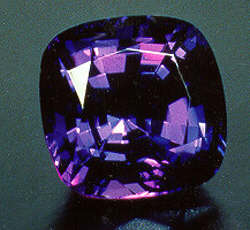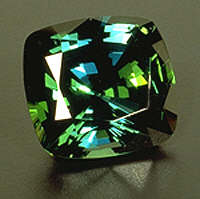One of the most exciting gem discoveries of the twentieth century is tanzanite, which was first seen in Tanzania in 1967. It was publicized by Tiffany & Co. It has a vibrant blue to blue violet color and can easily be mistaken for the finest sapphire.
 |
| Tanzanite, Tanzania Photo by ICA/Bart Curren |
If you are looking at a tanzanite it is critical to view it under different lighting conditions. In daylight tanzanite will display the most blue, incandescent light will bring out the violet color. Generally those stones that are brilliant blue with minimal violet, even in incandescent light, will command the highest price. If you prefer the violetish shades you will pay less.
| Colors: | Blue to violet |
| R.I.: | 1.69 – 1.70 |
| Durability: | Fragile |
| S.G.: | 3.20 – 3.40 |
| Treatment: | Assume heating |
| Hardness: | 6 – 7 |
| Availability: | Supply meets demand |
| Localities: | Tanzania |
| Price: | Moderate to expensive |
| Common shapes: | Oval, cushion and fancy shapes available |
Before the incredible blue shade is created by heat, resulting in tanzanite, the zoisite is a greenish to brownish color which is extremely trichroic. There is some zoisite that has been naturally heated by the sun to turn the material to tanzanite, but most is gently heated before cutting.
 |
| Green chrome zoisite. Photo by ICA/Bart Curren |
